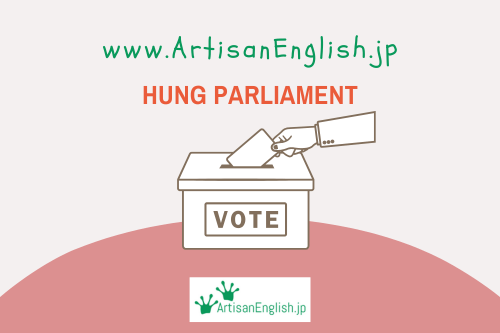
YouTube / iTunes / Spotify / Radio Public / Pocket Casts / Google Podcasts / Breaker / Overcast
Listen to ArtisanEnglish.jp posts & lesson intros here.
WotD: Hung parliament
It may have slipped your attention, with all the focus on the American presidential election on Tuesday, but Japan recently held a national election, which surprisingly resulted in a hung parliament.
A hung parliament is a term that refers to a situation where no single political party secures an outright majority in a legislative election.
This results in a parliament where the parties must work together to create a coalition government or face the possibility of gridlock.
In many democracies, obtaining a majority is crucial for enacting laws and policies, making the occurrence of a hung parliament particularly significant.
When a hung parliament emerges, it often reflects a divided electorate.
Voters may feel that their choices are not fully represented by the traditional major parties, leading to a rise in smaller parties.
Consequently, a hung parliament can signal a shift in political values and priorities among the populace.
Moreover, it can grant smaller parties increased influence, as their support becomes essential for forming a government.
In Japan, the reason for a hung parliament is most likely voter disgust with the LDP slush fund scandal.
The implications of a hung parliament are profound.
Without a clear majority, negotiations are required to form a coalition.
This process can be contentious, as parties must discuss terms, concessions, and compromise.
If the talks fail, it may lead to another election, which can create instability in governance.
Conversely, when a coalition is formed successfully, it can foster collaboration and give rise to innovative policies that might not have emerged from a majority government.
As citizens engage with the democratic process, a hung parliament may encourage more inclusive and representative governance in the future.
Flesch-Kincaid Readability Test
This post compares in readability to The New York Times.
It is likely to be understood by a reader with at least a 10th-grade education (age 16).
On the Flesch-Kincaid reading-ease test, this post scores 40.
The easier a passage is to read, the higher the score on a scale of 0 – 100.

